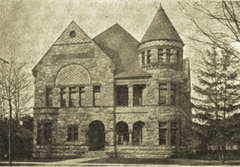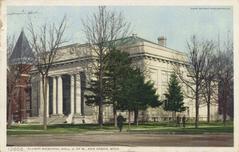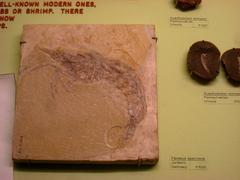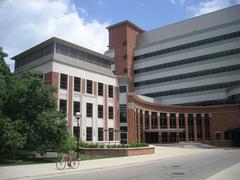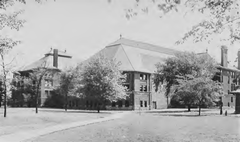
Nichols Arboretum Visiting Hours, Tickets, and Ann Arbor Historical Sites Guide
Date: 04/07/2025
Introduction
Nestled along the Huron River in Ann Arbor, Michigan, Nichols Arboretum—fondly known as “The Arb”—is a living museum of botanical beauty, ecological preservation, and cultural history. Spanning more than 120 acres, the Arboretum showcases glacial landscapes, native plant collections, and curated gardens, including the famed W.E. Upjohn Peony Garden—the largest collection of heirloom peonies in North America. Founded in the early 20th century through collaboration between the University of Michigan, the City of Ann Arbor, and the Nichols family, the Arboretum remains a hub for research, education, and community engagement.
Visitors can enjoy tranquil riverside walks, immersive nature observation, educational programs, and seasonal events such as the spectacular peony bloom each spring. With free admission and year-round hours from dawn to dusk, Nichols Arboretum invites all to experience its natural splendor and historical significance (Ann Arbor Parks; The Cultural Landscape Foundation; Wikipedia).
Table of Contents
- Introduction
- Indigenous Roots and Early Land Use
- Founding and Early Development
- Expansion and Botanical Collections
- Visiting Hours and Admission
- Directions and Accessibility
- Events, Tours, and Photography
- Stewardship and Community Engagement
- Landscape Features and Restoration
- Modern Significance and Milestones
- FAQs
- Additional Resources
Indigenous Roots and Early Land Use
Nichols Arboretum rests on ancestral land of several Indigenous peoples who stewarded the area long before European settlement (Ann Arbor Parks). The Huron River provided water, food, and transportation for these communities. Although later converted to farmland, parts of the Arboretum—like its glen and rill—retained their natural character, serving as a rare remnant of pre-settlement Michigan.
Founding and Early Development (1899–1920s)
In 1899, University of Michigan professors recognized the area’s educational and ecological potential and brought in landscape architect O.C. Simonds, known for his naturalistic designs (The Cultural Landscape Foundation). Through contributions from the Nichols family and the city, the Arboretum was officially established in 1907, with Simonds designing trails, meadows, and plantings that harmonized with the land’s glacial topography (AADL).
Expansion and Signature Botanical Collections
The Arboretum grew throughout the 20th century, expanding both land and plant collections. The W.E. Upjohn Peony Garden, established in 1922, is a major highlight, featuring over 800 peony plants and more than 350 historic varieties (Follow the Piper; Ann Arbor.org). Other notable areas include the Heathdale and Dow Prairie, supporting both native and exotic species and fostering regional biodiversity (AADL).
Nichols Arboretum Visiting Hours and Admission
- Hours: Open daily, year-round, from dawn to dusk.
- Admission: Free entry; no tickets required.
- Special Note: During peak peony bloom, free shuttle service may be available between Mitchell Field and the Washington Heights entrance (Ann Arbor.org).
Directions and Accessibility
- Location: 1610 Washington Heights, Ann Arbor, MI 48104
- Parking: Limited parking near the Arboretum; metered spots on Washington Heights and Observatory Street. Free parking after 5 p.m. at U-M lot M-28 and on Sundays.
- Public Transit: Ann Arbor bus routes stop near main entrances; bike racks available.
- Accessibility: Main paths, especially near the Peony Garden, are accessible to wheelchairs and strollers. Some trails are hilly or uneven; visitors with mobility concerns should check trail maps (Ann Arbor Parks; WhichMuseum).
Special Events, Guided Tours, and Photography
- Peony Bloom Season: Late May through early June, featuring over 10,000 peony blossoms and drawing tens of thousands of visitors (Wikipedia).
- Shakespeare in the Arb: Outdoor theater in June offers a unique cultural experience (Ann Arbor Observer).
- Guided Tours: Seasonal tours highlight ecology, Indigenous heritage, and plant collections.
- Photography: The Peony Garden, riverfront, and fall foliage are especially popular for photographers. The “What’s In Bloom” page provides up-to-date information (With Wonder and Whimsy).
Stewardship and Community Engagement
Nichols Arboretum is jointly managed by the University of Michigan and the City of Ann Arbor, with the university overseeing 123 acres and the city maintaining a 34-acre section. The James D. Reader Jr. Urban Environmental Education Center serves as a hub for programs and volunteer activities (Ann Arbor Parks). Community stewardship is central, with opportunities for volunteering and public education.
Landscape Features and Ecological Restoration
The Arboretum’s landscape includes open meadows, restored prairies, mature woodlands, and riverside habitats. Restoration efforts focus on native plant communities and wildlife habitat, preserving Michigan’s ecological heritage (Michigan.org).
Modern Significance and Milestones
Recent years have seen major milestones, such as the Peony Garden’s centennial in 2022, supported by a $2 million Upjohn family endowment. The Arboretum is part of the University of Michigan Matthaei Botanical Gardens and Nichols Arboretum, together managing over 700 acres of gardens and preserves (The Cultural Landscape Foundation). It remains a vital center for research, education, and recreation.
Frequently Asked Questions (FAQs)
Q: What are the visiting hours?
A: Open daily from dawn to dusk, year-round.
Q: Is admission free?
A: Yes, there is no entrance fee.
Q: Are guided tours available?
A: Yes, check the official website for seasonal offerings.
Q: Are dogs allowed?
A: Leashed dogs are welcome.
Q: Is the Arboretum accessible?
A: Main paths and the Peony Garden are accessible; some trails may be challenging for those with mobility impairments.
Q: Where can I park?
A: Metered and free parking are available near the main entrances; parking is limited during peak times.
Practical Visitor Tips
- Best Time to Visit: Late May to mid-June for peonies; spring and fall for wildflowers and foliage.
- What to Bring: Comfortable shoes, water, sun protection, and a camera.
- Rules: Respect all plantings, stay on trails, and clean up after yourself.
- Nearby Attractions: University of Michigan Museum of Natural History, Ann Arbor Hands-On Museum, Huron Riverwalk, and downtown Ann Arbor.
Visuals and Media Recommendations
- High-resolution images of the Peony Garden in bloom.
- Interactive trail maps highlighting entrances, gardens, and key features.
- Virtual tours are available on the official website.
Additional Resources
- University of Michigan Matthaei Botanical Gardens and Nichols Arboretum
- Ann Arbor Parks and Recreation – Nichols Arboretum Nature Area
- The Cultural Landscape Foundation – Nichols Arboretum
- Nichols Arboretum Wikipedia
- Follow the Piper – Peony Garden Tips
- Ann Arbor.org – Peony Garden
- WhichMuseum – Nichols Arboretum
- Adam Archives – Ann Arbor Insider Tips
- Discovering Anew – Michigan Flower Guide
- With Wonder and Whimsy – Peony Garden
- Ann Arbor Observer – Nichols Arboretum
Final Thoughts
Nichols Arboretum is a cherished oasis embodying Ann Arbor’s natural beauty, botanical innovation, and community spirit. Its free, year-round access, iconic Peony Garden, diverse landscapes, and educational opportunities make it a must-visit destination. Plan your trip to this living landmark and connect with Ann Arbor’s ecological and cultural heritage (Ann Arbor Parks; The Cultural Landscape Foundation; University of Michigan Matthaei Botanical Gardens).







